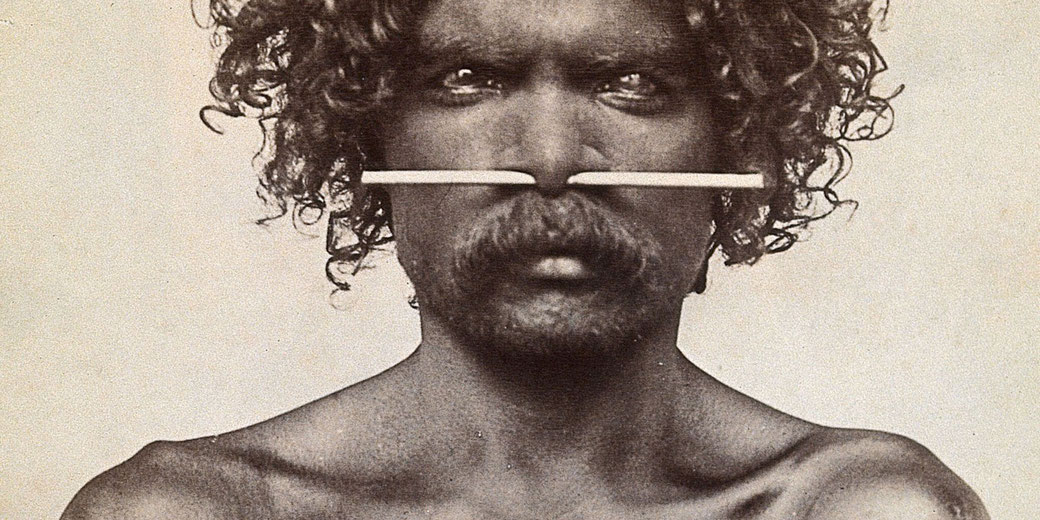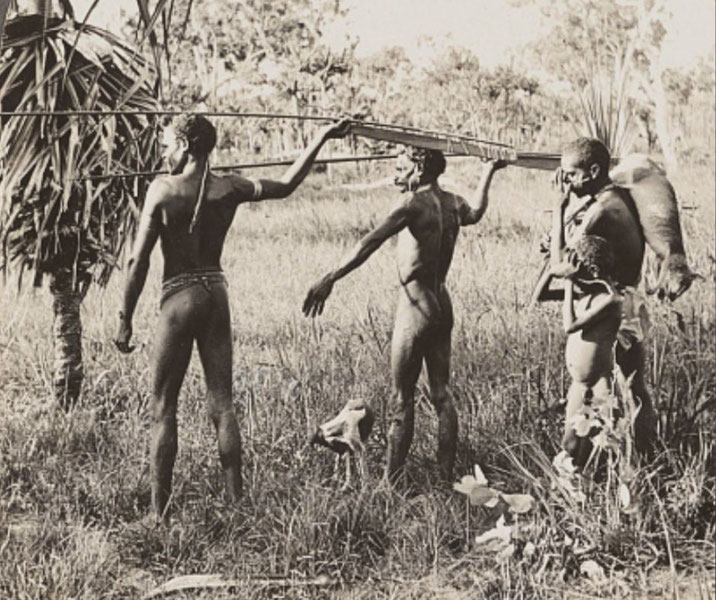How the Australian First Nations resisted colonisation

As European colonists began expanding across Australia, they came into constant conflict with the First Nations people.
There were various approaches to try and deal with the clash of cultures, including deals, friendships, corruption, and theft.
However, some First Nations warriors chose to fight back to defend their traditional lands.
Pemulwuy (1750 - 1802)
Pemulwuy was a Bidgigal man of the Darug nation near Sydney. He was already a respected elder in his community when the British settlers arrived, with some sources indicating that he may have been a carradhy, meaning 'clever man', in his tribe.
However, in 1790 in Port Jackson he threw a spear at John McIntyre, one of Governor Phillip's assistants.
McIntyre died from the wound and Phillip sent out soldiers to seek revenge. After a long search, they were unable to locate Pemulwuy or his people.
Beginning in 1792, Pemulwuy led his First Nations warriors in a guerilla campaign against the European colonists.
This involved attacks on settlers, burning buildings and stealing food. This warfare culminated in the Battle of Parramatta in March 1797, in which Pemulwuy led an army of 100 local warriors against the settlement at Parramatta.
In the conflict, Pemulwuy was shot around seven times, while more than five of his warriors died.
Pemulwuy was captured and the colonists sent him to their hospital for treatment.
However, while there, Pemulwuy escaped.
After further guerilla attacks at colonial sites, the new governor of New South Wales, Philip King, offered a cash reward for anyone who could find and kill Pemulwuy.
King also made it legal for settlers to kill any First Nations people seen near Parramatta.
On 2 June 1802, Pemulwuy was finally caught and killed by Henry Hacking.
Following this, Pemulwuy's head was sent to England for study.

Musquito (1780 - 1825)
Musquito was another resistance leader from the Sydney area. He was born at Port Jackson around 1780, and by 1805, had also participated in guerilla attacks on colonial settlements at Hawkesbury.
As a result of this, he was arrested and imprisoned at Parramatta. As a punishment for his destruction of property, he was sent to Norfolk Island.
He was a prisoner there for eight years, and then was sent further away, to Launceston in Tasmania.
However, by 1817, Musquito was working with the colonial authorities as a tracker.
His knowledge of native bushland made him a valuable asset in finding bushrangers.
At some point after this, Musquito left the European settlements and built networks with the First Nations people nearby.
Using his guerilla warfare experience from earlier in his life, he led an armed group against local farms during 1823-4, stealing goods and killing a number of settlers along the east coast of Tasmania.
During one raid in 1824, Musquito was wounded and captured again. He was charged with murder and hanged at Hobart in 1825.
Windradyne (1800 - 1829)
Another First Nations warrior that arose in the Sydney region was known as Windradyne, from the Wiradjuri people.
He was the most famous military leader during the Bathurst War in 1824.
British colonists had continued to spread out from Sydney Cove and, during the governorship of Lord Brisbane, there was a commitment for settlers to reach the Blue Mountains.
Further expansion pushed the local groups away from traditional hunting grounds, and both started competing for the same land.
It was in this context that Windradyne became an effective guerilla warrior leader, using hit-and-run raiding techniques against settlers.
Two European stockmen were killed in December 1823 and Windradyne was assumed to have been responsible.
The governor sent the military after him, and they eventually captured him and imprisoned him for a month.
After his release, Windradyne continued attacking the colonists in response to reports that First Nations women and children had been killed by stockmen in the Wyagdon Ranges.
In response to the escalating violence, Bathurst was declared to be under martial law by the governor in 1824.
A reward was offered for the capture of Windradyne. However, despite many attempts, he was never caught.
During an annual meeting with local tribes in Parramatta, the Governor was approached by Winradyne and received an official pardon for his actions.
Following his pardon, Windradyne no longer participated in further clashes against the Europeans, and eventually died following a battle with another First Nations group.
Yagan (1795 - 1833)
This First Nations resistance leader came from Perth. Yagan was born sometime around 1795 as part of the Noongar nation, located just south of Perth.
At the homestead of Archibald Butler, a young First Nations boy was shot, and the Noongar man sought vengeance by killing one of Butler's servants with a spear.
Yagan was arrested and charged with murder in 1832. He served six weeks of his sentence on Carnac Island before managing to escape with two other prisoners, who stole a boat and made it back to the mainland.
Even though the authorities were sent to recapture him, Yagan remained free and rumours of his ability to evade capture spread quickly.
Eventually, Yagan was caught in an ambush by William and James Keates in 1833 and was killed.
Like Pemulwuy before him, Yagan's head was sent to England and was only returned to Australia in 1997.
Jandamarra (1873 - 1897)
Also from Western Australia, Jandamarra was from the Bunuba nation, and was born around 1873 in the Kimberley region of Western Australia.
Jandamarra worked as a station hand with Europeans before returning to his country and reintegrated back into traditional society.
His reputation as a gifted horse rider was well-known.
Later, Jandamarra was accused of stealing sheep and was arrested. However, he made a deal with the local police that he would have the charges dropped if Jandamarra agreed to look after the police horses for them.
Jandamarra then worked for the police as a tracker. Unfortunately, this meant that he spent most of his time helping the police capture other First Nations people.
The elders of the Bunuba nation approached Jandamarra and made him choose between remaining as part of his people or being absorbed into European society.
As a show of his loyalty to the Bunuba, Jandamarra killed Constable Richardson, his partner, in his sleep, and then set free the First Nations people who were imprisoned.
Over a three-year period, Jandamarra led tribal warriors in attacks against the settlers.
He commanded 50 men at the Battle of Windjina Gorge, in which Jandamarra was wounded.
During an attack on his former police station in 1897, Jandamarra was shot and killed by another indigenous tracker who was working for the police.
Further reading
What do you need help with?
Download ready-to-use digital learning resources
Copyright © History Skills 2014-2025.
Contact via email
With the exception of links to external sites, some historical sources and extracts from specific publications, all content on this website is copyrighted by History Skills. This content may not be copied, republished or redistributed without written permission from the website creator. Please use the Contact page to obtain relevant permission.





